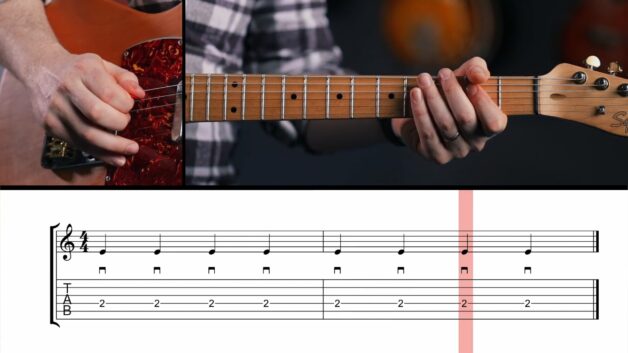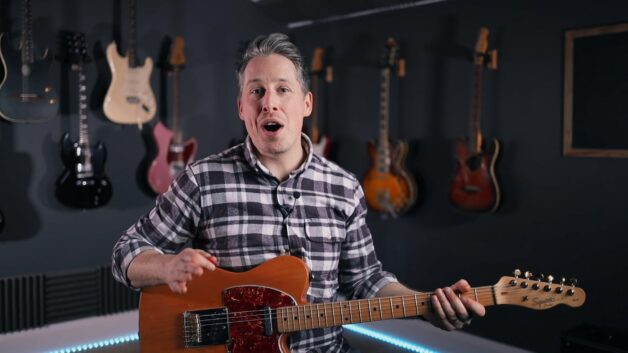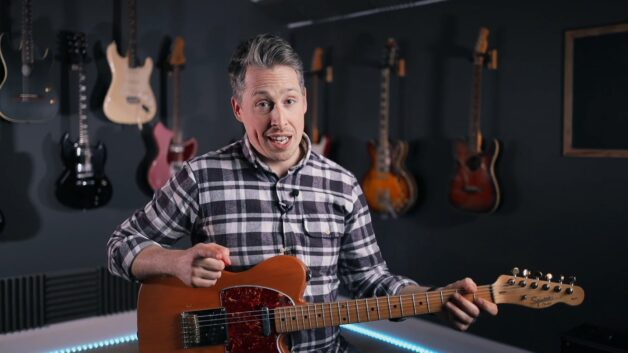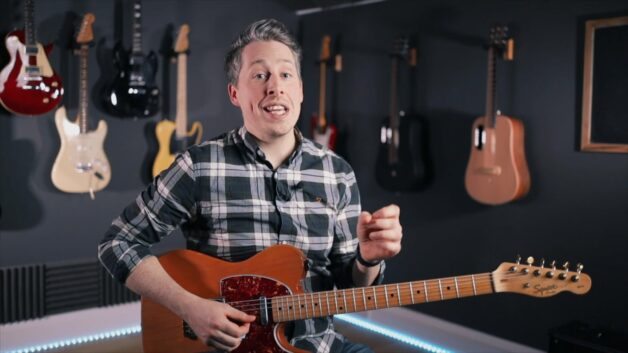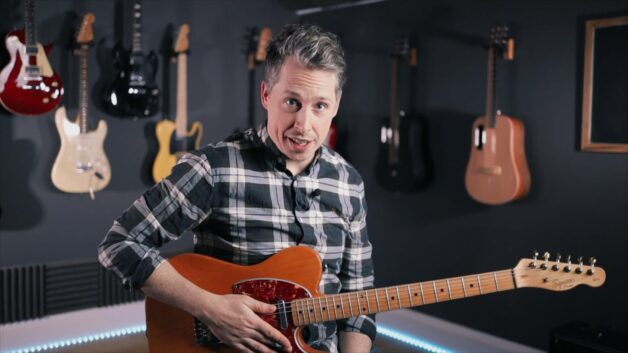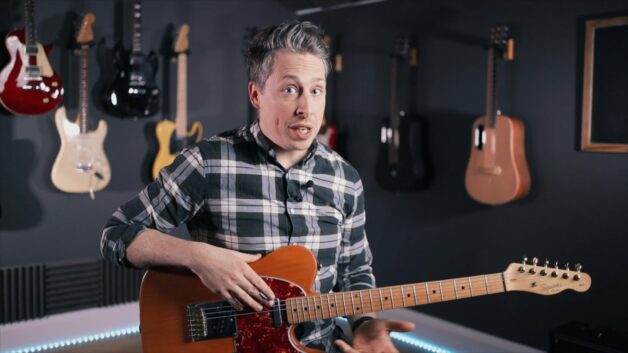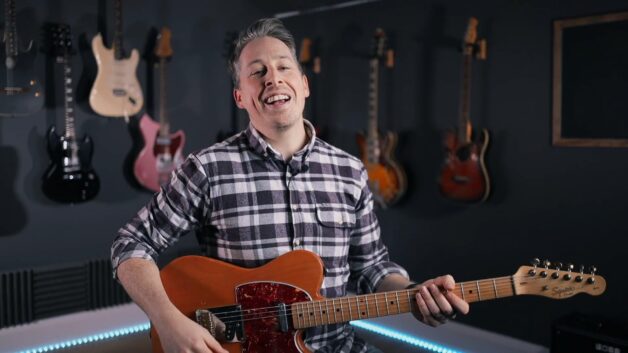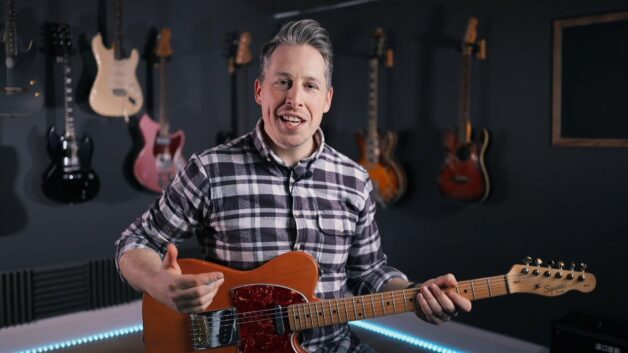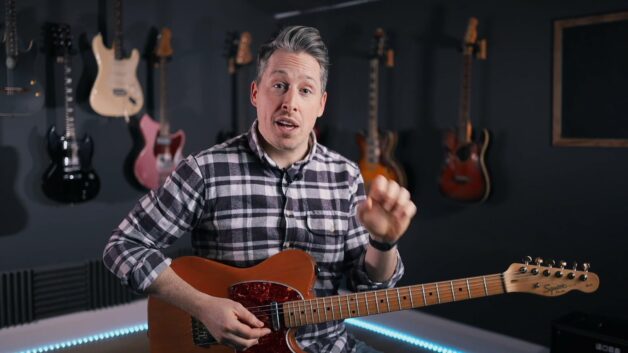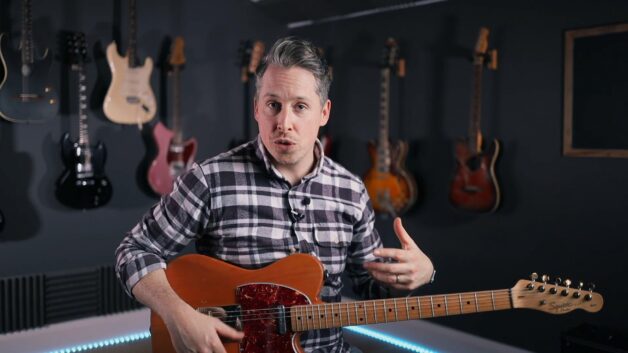Module 2 - Lesson 6
Introduction to Funk Guitar
 Julien Bitoun
Julien Bitoun
- Beginner
- Funk
-
MODULE 2
Introduction to Guitar Music Styles - Introduction to Folk Guitar
- Introduction to Blues Guitar
- Introduction to Pop Guitar
- Introduction to Rock Guitar
- Introduction to Metal Guitar
- Introduction to Funk Guitar
- Introduction to Jazz Guitar
Recommended songs
| Title | Album | Type | |
|---|---|---|---|
Another One Bites the Dust

|
Electric Guitars | ||
Can't Stop

|
By the Way | Guitar | |
Cissy Strut

|
The Meters | Guitar, Bass & Backing Track | |
Free Ride

|
They Only Come Out at Night | Guitars, Bass & Backing Track | |
Get Lucky

|
Electric Guitar | ||
| I Got You (I Feel Good) | I Got You (I Feel Good) | Full Score | |
Kiss

|
Guitar | ||
Le Freak

|
C'est Chic | Guitar, Bass & Backing Track | |
Long Train Runnin'

|
Guitar | ||
Need You Tonight

|
Kick | Guitars, Bass & Backing Track | |
September

|
The Best of Earth, Wind & Fire, Vol. 1 | Guitars, Bass & Backing Track | |
Sex Machine

|
Guitar | ||
The Chinese Way

|
Guitar | ||
Uptown Funk

|
Guitar | ||
What Is Hip?

|
Tower of Power | Guitars, Bass & Backing Track |
How to Play Funk Music on Guitar: A Beginner’s Guide
Funk Guitar Basics
Learning how to play Funk music on guitar is about more than just learning a few funky chords, it’s diving into one of music’s most rhythmically demanding genres. Funk guitar evolved from soul and rhythm & blues, with roots going back to artists like Stevie Wonder and Otis Redding. Back in the 60s and 70s, guitarists transitioned from jazz-style accompaniments toward a sharper, rhythmic approach. Artists like James Brown and Nile Rodgers eventually took funk guitar to entirely new heights.
As a beginner guitarist tackling funk, you’ll quickly realize that precise rhythm is king. Funk guitarists constantly balance intricate strumming patterns with controlled muting, which can be challenging initially. A common struggle for beginners is getting comfortable with constant right-hand movement, even when not sounding a chord. The solution? Practicing slow and steady.
Key Takeaways to Keep in Mind:
- Funk guitar heavily depends on rhythmic precision.
- Single-coil guitars (Telecaster, Stratocaster) are ideal for achieving a clean, defined funk tone.
- Important techniques include triads, bar chords, ghost notes, slides, and hammer-ons/pull-offs.
- Practicing slowly, section by section, is crucial to mastering funk rhythm.
Understanding Funk Guitar Tone and Gear Essentials
When exploring how to play Funk music on guitar, gear and sound selection play a critical role. Funk guitarists typically favor a bright, clean tone with a slight compression to manage dynamic fluctuations. A common beginner mistake is using excessive distortion or effects, which quickly muddies the rhythmic clarity that defines funk guitar.
A Telecaster provides a brighter, crisper tone that slices through the mix effortlessly, perfect for the rhythmic punch that funk demands. On the other hand, the Stratocaster offers a slightly thicker yet equally crisp sound. Guitar legends like Nile Rodgers have relied heavily on single-coil Stratocasters precisely for their distinctive “quacky” tones in pickup positions 2 and 4.
Amp selection also matters: A Fender Deluxe or Twin Reverb is the classic choice thanks to its clean headroom and sparkling highs. Alternatively, solid-state amps like the Roland JC-120, known for their crystal-clear clean tones, or even recording directly into a sound interface, can also give you authentic funk results. Prince, for instance, often bypassed amps entirely, plugging directly into the mixing console for his pristine clean tones.
Mastering Essential Funk Techniques and Common Pitfalls
As a beginner guitarist working through your first funk rhythms, you’ll encounter triads and bar chords frequently. Funk guitar relies heavily on smaller chord shapes played on higher strings to achieve its characteristic rhythmic bite. Bar chords (like the E-shaped and A-shaped chord forms) are especially important since they can be easily moved around the fretboard. A good practice strategy is to position your fingers first and then gradually apply even pressure, ensuring clean, muted sounds without buzzing.
A common challenge for beginners is mastering the rhythmic strumming patterns. Funk guitar grooves rely predominantly on sixteenth-note strums, requiring steady right-hand movement, even when muting notes. Beginners often mistakenly pause their hand movement between strums, resulting in stiff or unnatural rhythms. To overcome this, practice strumming continuously at slower tempos, activating chords by pressing down briefly with your left-hand fingers and releasing them to create muted or “ghost” notes.
Beyond the basics, techniques like slides, hammer-ons, and pull-offs enrich your funk rhythms. Ghost notes are also essential. A track like “Long Train Running” by The Doobie Brothers perfectly illustrates ghost-note techniques, while “Kiss” by Prince demonstrates tight, rhythmic muting and clean chord voicings. Start by breaking these rhythms into smaller sections, looping and mastering them one at a time before moving forward.
Finally, while funk guitar can feel complex initially, patience and structured practice will steadily improve your groove and precision. Stay disciplined, slow down your practice, and remember: precision beats speed every time when learning how to play Funk music on guitar.

